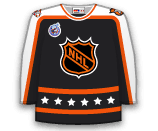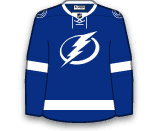Glendening has no points and a minus-3 rating in nine games with the Red Wings. With Cory Emmerton going the other way Glendening will very likely be in the lineup on Saturday.

Glendening has no points and a minus-3 rating in nine games with the Red Wings. With Cory Emmerton going the other way Glendening will very likely be in the lineup on Saturday.

Eaves failed to record a point in three games with the Red Wings before getting sent down. Eaves was placed on waivers but went unclaimed, in his time with Grand Rapids he had four goals and two assists in eight games.

Zucker was recalled on December 10 and appeared in Wednesday’s game at Anaheim. The 21-year-old has registered 18 shots in seven games with Minnesota this season and owns seven points (4G / 3A) in 33 career NHL games with the Wild. Zucker has tallied 12 points (7G / 5A) and 49 PIMs in 16 games with Iowa this season.

Haula has recorded 14 points (7-7=14) in 20 games with Iowa this season. The 22-year-old ranks tied for first on the team in scoring and power-play goals with four, is tied for second in goals and tied for third in assists. He recorded an assist in his NHL debut on November 29 vs. Colorado and has two assists in six games with Minnesota this season.

Smith was the 54th overall pick in 2007 and has been great for Springfield this season. He has posted an 11-3-1 record with a 2.58 GAA and .908 SV% in 15 games. He will serve as Mike McKenna's backup with Curtis McElhinney on the shelf.

Starting goaltender Tim Thomas took part in the team's practice Thursday, but left with an unspecified injury after 15 minutes. Florida will have an update on Thomas' status following the team's morning skate on Friday. Markstrom appeared in 11 games with Florida earlier this season, posting a 1-5-3 record, 3.36 goals-against average and a .877 save percentage. He was loaned to the Rampage on November 10. After joining San Antonio, the 23-year-old appeared in 10 games, going 4-5-1.

Nilsson made five appearances, winning none of them and posting a 3.63 GAA and .873 SV%.

Baertschi struggled in his 26 games with the Flames. He registered only two goals and nine assists with a minus-4 rating. He was the 13th overall pick in 2011 after he ripped up the Western Hockey league, but he has not developed into the scoring threat the Flames envisioned when they selected him. However this is common with young players and Sven is only 21-years-old and still has a bright future ahead of him. He heads to Abbotsford to develop his game and could find himself back in Calgary soon.

McGinn did not dress for a game during his most recent call-up. He was sent back to the AHL because the Flyers signed Chris VandeVelde this morning.

Bulmer has recorded 12 points (9G / 3A), 20 penalty minutes and three power-play goals in 21 games with Iowa this season. He leads the team in goals and shots (62) and ranks third in scoring. The 6-foot-4, 212-pound forward tallied seven points (4G / 3A) and 41 PIM in 43 contests with Houston last season.

Ceci was the 15th overall pick in the 2012 NHL Draft. The 19-year-old is in his first full season with Binghamton and has two goals and 15 assists in 24 games. He is a great defensive prospect and is known for both his offensive and defensive prowess. He is a great power-play guy, but likely won't be with the Senators long enough to garner fantasy value. He will play for Marc Methout, who is out with the flu.

McIlrath was the 10th overall pick in 2010 and is in his second season with the Rangers AHL affiliate in Hartford. He is not known for his offence as much as his physical play in defensive zone, so he does not represent a young D-Man with fantasy upside. He has been recalled because of the injury to Marc Staal and could make his NHL debut tonight.

Pageau recorded one goal in eight games with the Senators earlier this season. In his time with Binghamton he had six goals and 10 assists in 15 games. He is expected to dress tonight on the third line with Chris Neil and Colin Greening.

Yonkman recorded one assist in two games with the Ducks before being sent down earlier in the week. The 32-year-old journeyman defenseman will not see regular work on the Ducks blueline.
There was some weather trouble for Strome's flight so he will now just meet the Isles in Phoenix tomorrow because the team did not want him to fly all-day today and then play tonight. He has been recalled because he has been torching the AHL and the Islanders have some serious issues when it comes to generating offence. Strome is expected to make his NHL debut on Thursday after posting nine goals and 24 assists in the first 23 games of the AHL season. The Islanders are not recalling Sidney Crosby, but Strome has some serious offensive talent and is worth a look in all leagues, but most of his value lies in keeper leagues at this point.

Etem did not record a point in two games during his most recent call-up. He has a total of 10 points (6G / 4A) in 26 games with the Ducks.

Johnson has 11 goals and nine assists (20 points) in 23 games with the Providence Bruins this seasons. He has played in 104 NHL games tallying 14 goals and 37 points with the Penguins, Wild and Coyotes. Daniel Paille is unable to play tonight so Johnson slides right into the lineup to make his Bruins debut.
Wey did not record a point in the only game he played with the Capitals. He returns to Hershey where he has one goal and two assists in seven games.
Bachman missed over a month with a lower-body injury and likely won't be recalled unless Ilya Bryzgalov stays sidelined for longer than expected.
